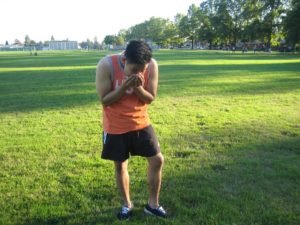Whooping cough or pertussis is commonly seen in early childhood but can affect adolescents as well. The name of this condition is derived from the whooping sound it produces when the individual gasps while coughing. Timely vaccination with the DPT vaccine usually provides protection to adolescents, but it will not guarantee complete immunity. Always remember that whooping cough is a communicable disease and can last up to 10 weeks. Due to the communicable nature of the disease, an infected individual should avoid any social gatherings. If you want to be prepared to handle the symptoms of this condition, all you have to do is to register for first aid training today.
What are the symptoms?
The symptoms of whooping cough do not often present themselves until three weeks after exposure to an individual with the disease. Even though the symptoms are generally mild at first, they can quickly progress to the distinctive whooping sound. The early indications of whooping cough include the cold-like symptoms such as watery eyes, runny nose, low-grade fever, sneezing and dry cough. Once the illness worsens, severe fatigue and spasms of noisy coughing can occur.
Diagnosing whooping cough

The diagnosis of whooping cough is usually confirmed with a physical examination, diagnostic chest X-ray, oral history, blood test and sputum samples. Since pertussis is caused by a bacterial organism, antibiotics are usually prescribed in order to eliminate the infection as well as prevent its spread to others.
It is also recommended to breathe in steam from a vaporizer to help thin out the viscous respiratory secretions as well as drinking plenty of fluids. Additionally, taking over-the-counter analgesics can help minimize the fever and get rid of sore throat or body aches. Always bear in mind that the individual should have enough time to rest since it is vital during the acute phase of the illness since obstinate fatigue is often present.
Possible complications
Even though the complications of whooping cough can develop, they are usually less severe among adolescents. This is true if the teenager has been given the vaccine. In some cases, complications can occur which includes fainting, bladder incontinence, weight loss, severe coughing episodes and rib fracture from coughing. Another possible complication of whooping cough is its highly communicable nature, thus those who came in contact with the individual is at risk for acquiring the disease as well.
Preventive measures
The prevention of whooping cough is ideally done through vaccination. Even though there are no foolproof measures to avoid acquiring whooping cough, there are measures that can help reduce the risks. These include regular washing of hands, avoiding contact with those who have the illness, getting enough rest and eating a healthy diet. The proper management of stress is also vital since it can cause a lower immunity, thus increasing the risk for the development of infection.
